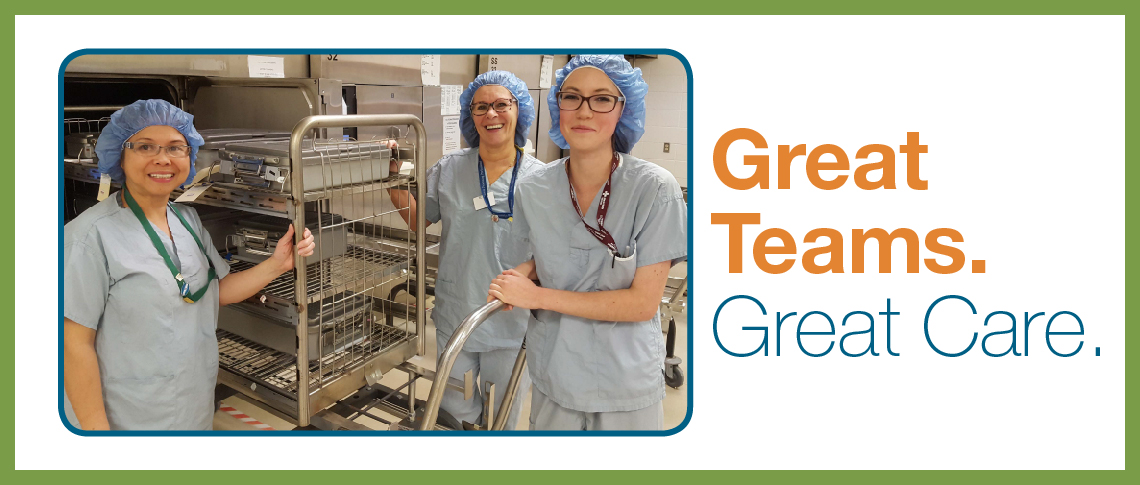

To say the medical device reprocessing department (MDRD) team is the wind beneath the wings of Alberta Health Services (AHS) is hardly cliché or hyperbole — it’s verifiable fact.
Without the broad expertise of these hardy, resilient souls — who keep everything from bedpans to surgical instruments and complex medical devices sterile, safe and at the ready 24-7 year-round — the myriad surgeries and medical procedures performed daily would simply grind to a halt.
Many of these skilled technicians don’t see a lot of sunlight, with their work areas often squirreled away in hospital sub-basements, backrooms or even next to the morgue, where they’re typically out of sight, out of mind for the majority of AHS staff during the daily hurly-burly at hospitals and sites across Alberta.
But with about 1,000 members across the province engaged in this very physical work, their impact is undeniable as they collect, disassemble, decontaminate, disinfect, assemble, function-test, package, sterilize, store and distribute literally hundreds of different kinds of instruments, equipment and surgical supply kits for operating rooms (ORs), hospital units and clinics. (Plus they also maintain the many specialized machines that maintain the medical devices.)
“I just love it. We face challenges on a continual basis,” says Catherine Williamson, lead for the 300-strong MDRD team across Edmonton Zone. “For me, medical device reprocessing is the most fascinating thing you could possibly be involved in. You never do the same thing two days in a row.”
Over her two decades in the field, Williamson says she’s witnessed a metamorphosis in the role.
“We’ve gone from being those people who are simply there washing bedpans and urinals to a highly sophisticated environment where the knowledge base is incredible.”
To become a medical device reprocessing technician in Alberta requires college studies plus at least 400 hours of practicum experience before the student is allowed to take the test for certification.
Once hired, diverse experience, frequent rotation and ongoing education are a must as equipment, standards and procedures evolve with medical advances.
“For me, it takes a new medical device reprocessing technician to be on the job for at least two years before they are totally comfortable working alone,” says Williamson.
“They have to be versatile; assignments and directions can change very, very quickly,” she adds. “They have to be optimal team players — you’re depending on your colleagues constantly. You have to be very knowledgeable and skilled. It’s not for the faint of heart, because it’s a very physically demanding job. I take my hat off to these truly amazing individuals because they work so hard.”
For example, a few of their specialties require them to:
“I think people call for items and assume it just magically appears,” says Supervisor Raquel Nogueira, a member of the MDRD team at University of Alberta Hospital who work in the basement next to the morgue.
“Technicians are required to bend, reach, lift and move equipment and supplies. They’re exposed to strong chemicals and bio-hazardous materials while doing their jobs. Their work areas can be noisy and busy and, at times, challenging or stressful, such as in emergencies.
“I try to remind staff: ‘You are the reason things run in the hospital. You make sure everything is ready for the patient, even though you’re not in the room.’”
Nogueira, who followed a favourite aunt into her chosen career seven years ago, adds with a smile: “Like a knight in shining armour, you may not know we’re here — but when you need us, we’ll come and save you.”